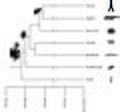Organ (anatomy) facts for kids
An organ is a special group of tissues that work together inside a living thing, like you or an animal. Each organ has a very important job to do to keep the body healthy and working. When several organs work together, they form an organ system. All the organ systems together make up a complete organism.
Here are some examples of organs you might know:
- Heart
- Lungs
- Brain
- Ear
- Eye
- Gall bladder
- Stomach
- Spleen
- Bones
- Pancreas
- Kidneys
- Liver
- Intestine
- Skin
- Uterus
- Bladder
Contents
How Our Bodies Are Organized
Our bodies, and the bodies of other living things, are built in amazing ways, from the smallest parts to the biggest. Scientists call this the "levels of organization."
Tiny Building Blocks: Organelles and Cells
It all starts with tiny parts inside cells called Organelles. Think of organelles as the mini-organs of a cell, each doing a specific job. For example, the mitochondria make energy, and the nucleus holds the cell's instructions.
These organelles are found inside cells. Cells are the basic building blocks of all living things. They are so small you need a microscope to see them!
Teams of Cells: Tissues
When many similar cells work together to do a specific job, they form a tissue. For example, muscle tissue helps you move, and nerve tissue sends messages around your body.
Organs: Working Together
Different types of tissues then come together to form an organ. For example, your heart is an organ made of muscle tissue, nerve tissue, and other tissues, all working to pump blood.
Organ Systems: Big Jobs
When several organs work together to perform a major function, they create an Organ system. For instance, your digestive system includes organs like the stomach, intestines, and liver, all helping you digest food. Other systems include the circulatory system (heart, blood vessels) and the nervous system (brain, nerves).
The Whole Living Thing: Organism
Finally, all the Organ systems work together perfectly to make a complete Organism. That's you, a dog, a tree, or even a tiny bacterium!
Organs in Plants
Just like animals, plants also have organs! These organs help them grow, get nutrients, and make new plants.
Roots
Roots are usually underground. They help anchor the plant in the soil and absorb water and nutrients.
Stems
Stems grow above ground and support the plant. They also carry water and nutrients from the roots to the leaves and flowers.
Leaves
Leaves are like the food factories of the plant. They use sunlight, water, and air to make food through a process called photosynthesis.
Flowers: For Reproduction
Many plants have flowers. Flowers are the reproductive organs of a plant. They help the plant make seeds, which can grow into new plants. For example, the beautiful Hibiscus flower has parts like stamen and pistils that are important for making seeds.
Images for kids
-
The liver and gallbladder of a sheep
See also
 In Spanish: Órgano (biología) para niños
In Spanish: Órgano (biología) para niños






